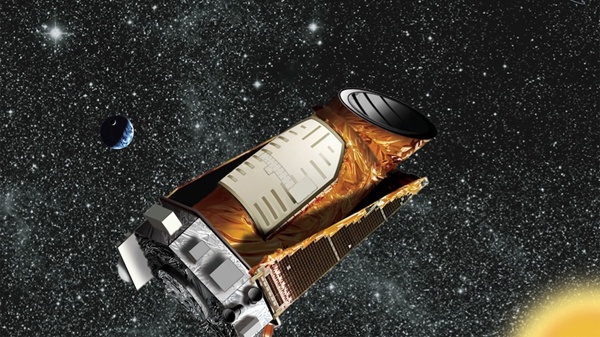
A fresh image from NASA’s New Horizons spacecraft released Tuesday showed the mission’s distant flyby target a billion miles beyond Pluto — nicknamed Ultima Thule — has an elongated shape.

More than 41 years and nearly 18 billion km from Earth, NASA’s Voyager 2 probe has finally passed beyond the protective bubble defined by the Sun’s magnetic fields and solar wind, joining its sistership Voyager 1 in the interstellar space.
It will map and study the tiny world in great detail, eventually returning a piece of Bennu to Earth in 2023. The discoveries of OSIRIS-REx will shed light on our solar system's ancient history.

The Hubble Space Telescope is a hero in the astronomy world - serving 25 years in space. And when it suffered a malfunctioning on October 5th, it took a heroic effort on the part of the Hubble team to get it working again.

NASA's planet-hunting telescope has run out of fuel after a nine-year mission that found more than 2,600 planets orbiting other stars along with thousands of candidate worlds.

Two instruments aboard NASA’s Spitzer Space Telescope – the Infrared Array Camera and the Multiband Imaging Photometer – have captured a spectacular image of the Cat’s Paw Nebula.

It's been a bad couple weeks in space. A week ago, technical difficulties forced engineers to put the Hubble Space Telescope's science mission on hold. Now, the Chandra X-ray Observatory is in safe mode, too.

Technosignatures are signs or signals, which if observed, would allow us to infer the existence of technological life elsewhere in the universe.

A mission to deflect asteroids that might threaten Earth has begun its final assembly phase, according to a news release. NASA is testing a technique meant to protect the planet from an impending asteroid strike.

Using data from NASA's Kepler Space Telescope, an international team has discovered a new exoplanet twice the size of Earth. It orbits its star every six days and is about 10 times closer than Mercury is to the Sun.

Hubble Space telescope snapped a series of stunning images of auroras dancing in the sky. The observations were taken before and after the Saturnian northern summer solstice.

Two years after launch, NASA’s OSIRIS-REx spacecraft has snapped its first pictures of asteroid Bennu, setting the stage for a cautious approach designed to put the probe in orbit around its quarry on New Year’s Eve.

The red points in the picture above are areas around the world with fires actively burning, accurate as of Thursday. It doesn't look great.

In addition to the Space Launch System (SLS) and the Orion spacecraft, NASA have teamed up with Lockheed Martin and other contractors to develop the Deep Space Gateway.

The US space agency launches a probe that aims to travel closer to the Sun than ever before.